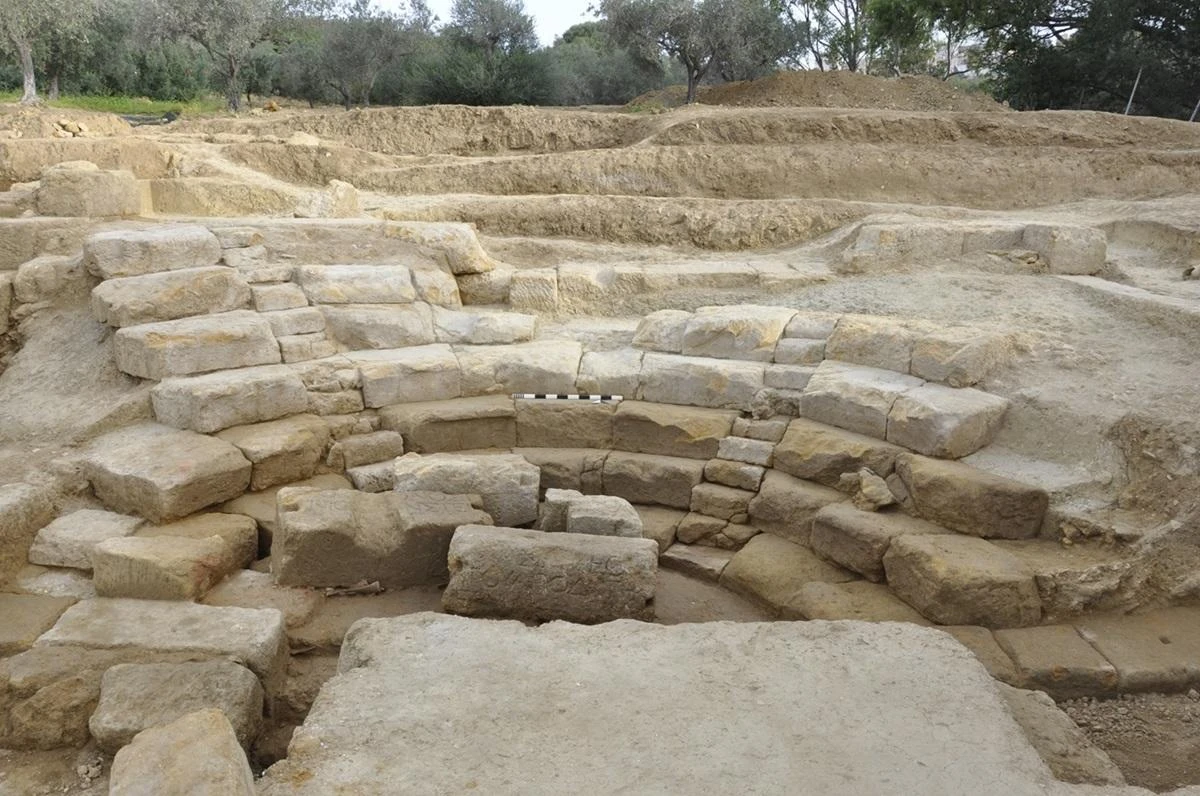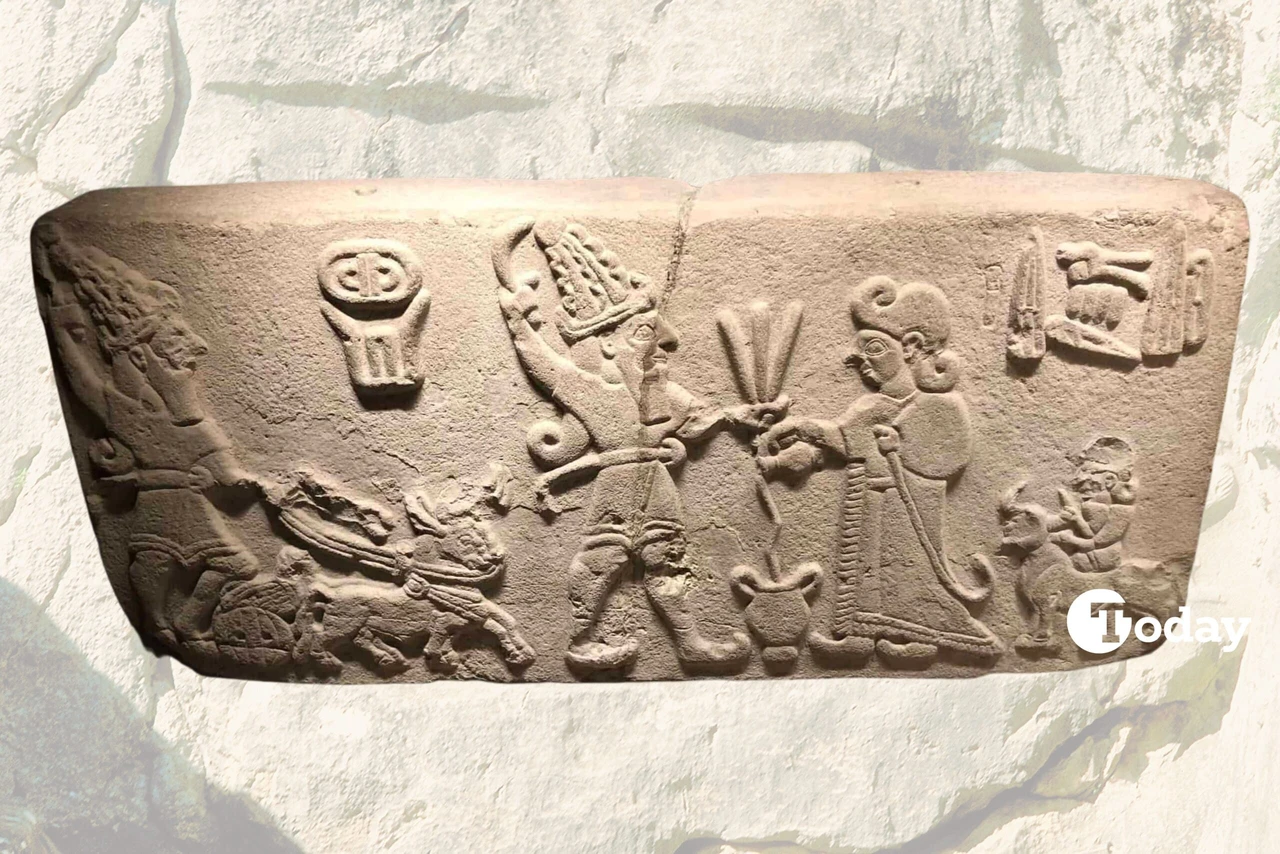Türkiye’s ancient Patara Lighthouse destroyed by tsunami rebuilt after 500 years
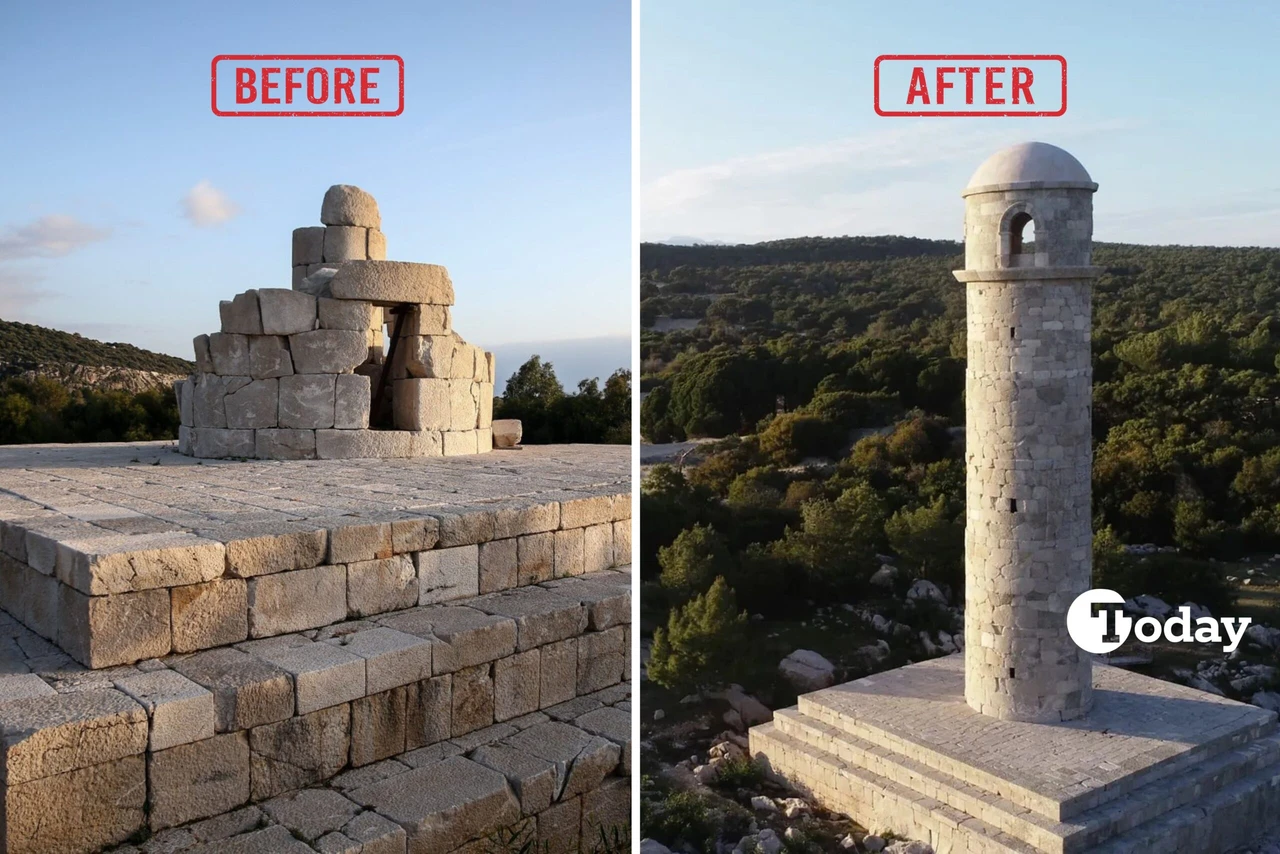 Collage of before (L) and after (R) photos of the 2,000-year-old Patara Lighthouse in the Kas district of Antalya, Türkiye, April 16, 2025. (Photos via Patara Excavations)
Collage of before (L) and after (R) photos of the 2,000-year-old Patara Lighthouse in the Kas district of Antalya, Türkiye, April 16, 2025. (Photos via Patara Excavations)
In the heart of Türkiye’s Mediterranean coast, a remarkable chapter of ancient maritime history has been revived. The 2,000-year-old Roman lighthouse in the ancient city of Patara, located in Antalya’s Kas district, has been resurrected 500 years after being destroyed by a tsunami caused by the 1481 Rhodes Earthquake.
Commissioned by Roman Emperor Nero in A.D. 64/65, the 30-meter-tall lighthouse once guided countless sailors across the Mediterranean. But at the end of the 15th century, powerful tsunami waves swept through the Patara harbor, toppling the lighthouse and burying it beneath shifting dunes. Forgotten for centuries, the structure lay dormant until archaeologists unearthed its story.
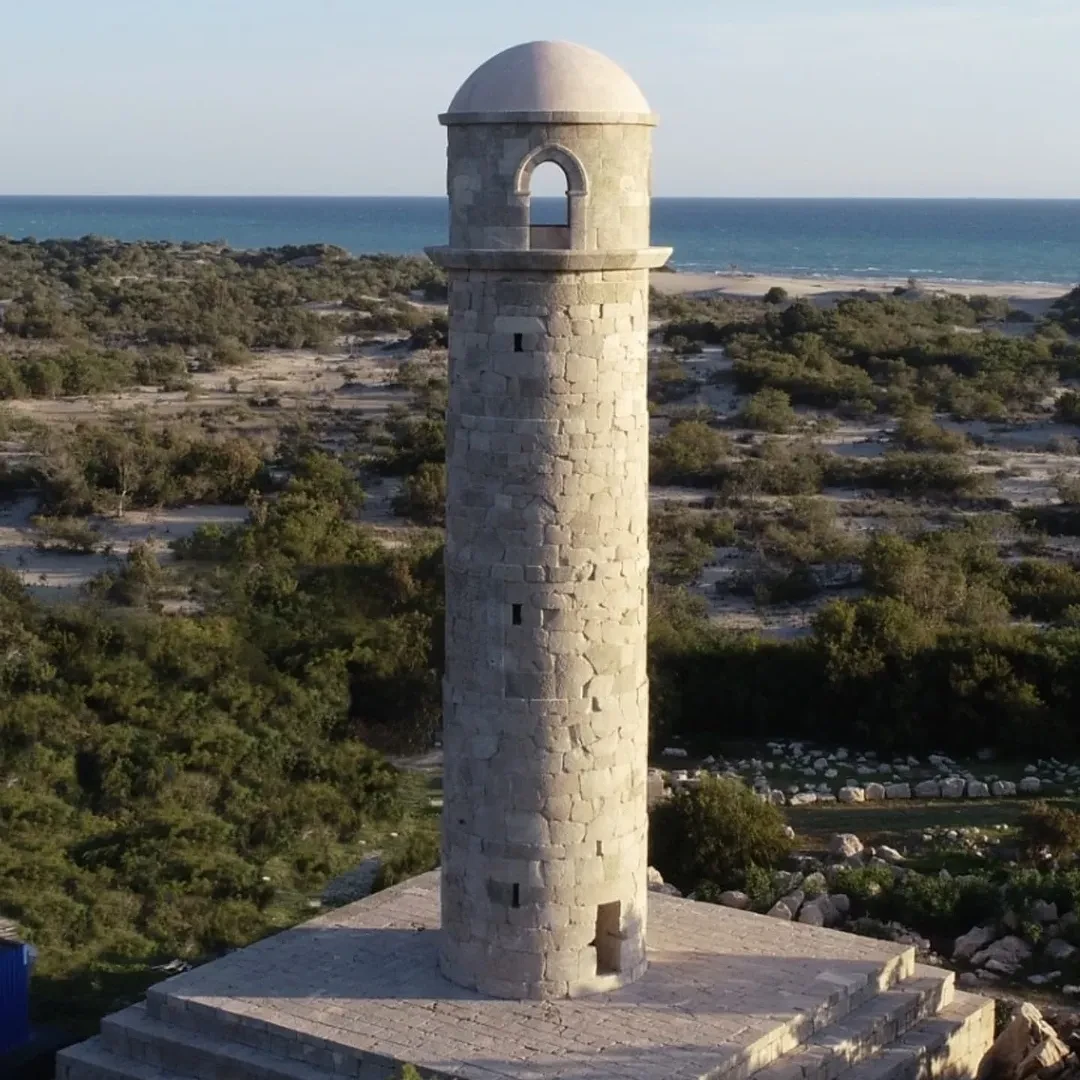
Patara Lighthouse reborn stone by stone
The rebirth of the lighthouse began in 2004 with the launch of systematic excavations. By the end of 2005, researchers had uncovered approximately 2,500 stones—large and small—that once belonged to the monumental structure. A team led by Professor Havva Iskan Isik meticulously reassembled the lighthouse like a giant jigsaw puzzle. After digitally modeling the monument and crafting replicas of missing or unusable stones, the team faithfully restored the ancient beacon.
Only 8 percent of the rebuilt lighthouse includes new stones, rising to 18 percent with the reconstructed upper section, where most damage occurred because of collapse.

‘It feels like a dream,’ says lead archaeologist
“This is one of the most extraordinary projects of my life,” Professor Iskan Isik said to Hurriyet, the lead archaeologist responsible for reviving the ancient marvel. “When we began in 2004, I felt as if I had birthed a child and raised it for 20 years. What we uncovered is unlike anything else in the world.”
“I couldn’t believe my eyes when the first stones emerged from beneath the sand. I knew then that this lighthouse would rise again. It’s an architectural symbol and a unique example of Roman engineering. Scientifically, this restoration opened a new gateway for archaeological studies around the world.”
An archaeological first in the world
Experts highlight that Patara’s lighthouse is the only known example of its kind to be fully reconstructed using mostly original stones. “This is a discovery,” emphasized Professor Iskan Isik.
“The global academic community will learn about ancient lighthouses through this structure and the scientific publications our team has prepared. And we did this with Turkish scientists.”

Hopes for a new beacon of light
Professor Iskan Isik, who has dedicated two decades to this ancient structure, hopes the lighthouse will once again shine—this time as a cultural and touristic icon. “Even if people in Antalya are unaware of Patara’s importance, the world recognizes its value,” she said. “I’ve received hundreds of emails from scholars and enthusiasts across the globe. Interest in this lighthouse is immense.”
The electrical infrastructure has already been installed, with cables running through the core of the tower. “It should shine again,” she added. “Imagine cruise ships sailing past with announcements saying, “We are now passing in front of the Patara Lighthouse.’ I even dream of seeing it featured on national currency.”
In Nero’s name: a legacy etched in stone
The lighthouse’s inscription still bears a bold message from its imperial patron: “I am Emperor Nero. I built this lighthouse for the safety of sailors.” Accompanied by a dolphin relief, the dedication cements the lighthouse’s role as both a navigational and symbolic monument of its time.
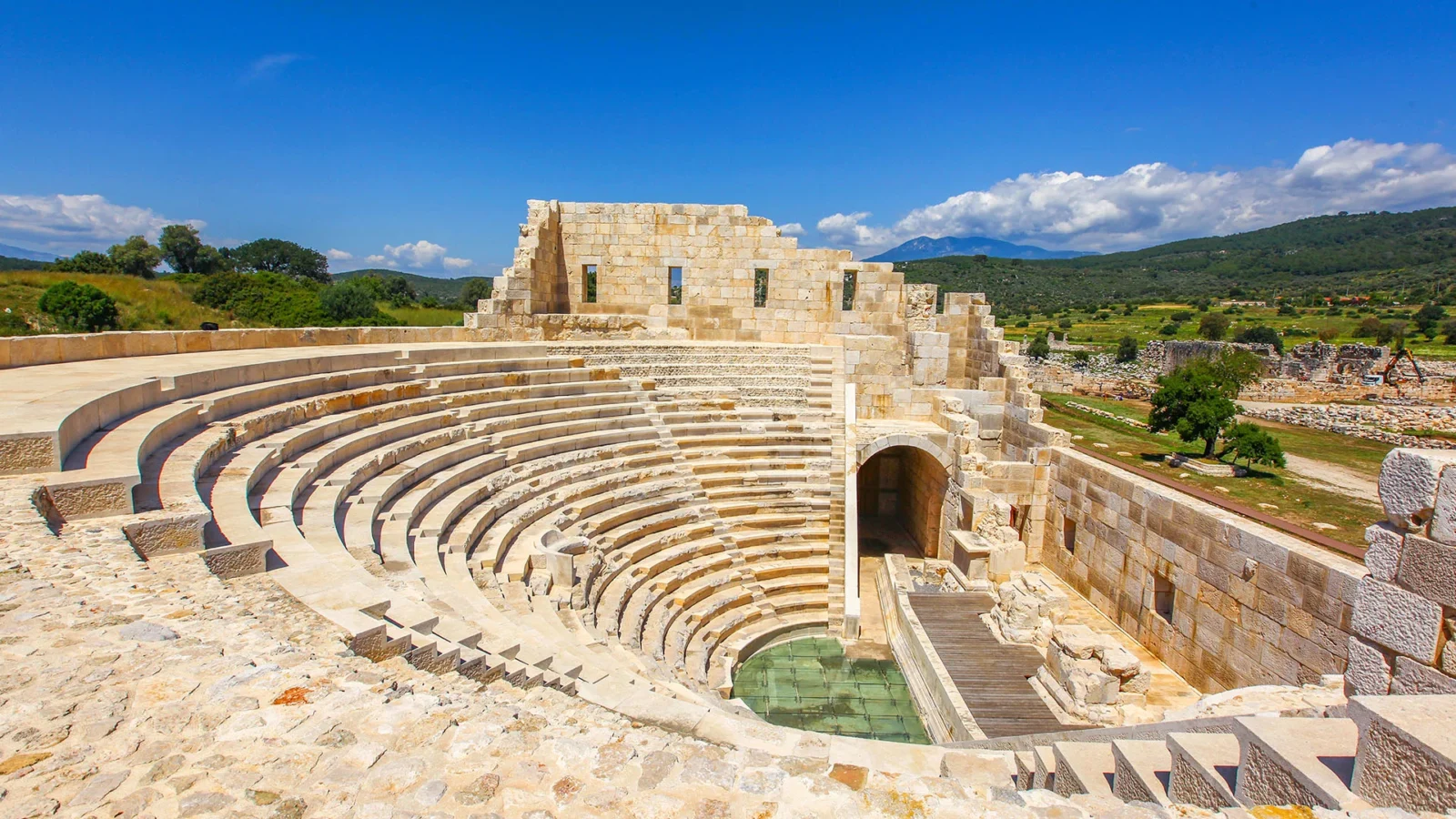
How to get to Patara
Patara is located 16 kilometers (9.94 miles) from Kalkan, 43 kilometers from Kas, and 75 kilometers from Fethiye.
The best way to reach Patara is via the Kas-Fethiye highway, where directional signs guide visitors to the ancient site. The nearest airports are Dalaman Airport, 115 kilometers away, and Antalya Airport, 195 kilometers away.
Once in Gelemis Village, visitors can access the site by passing through the entrance gate, where the ancient city begins.
Patara’s vast ruins stretch over a large area, so tourists should allocate plenty of time for exploring and walking. After visiting the ancient site, visitors can also enjoy the public beach that stretches out beyond the city.

